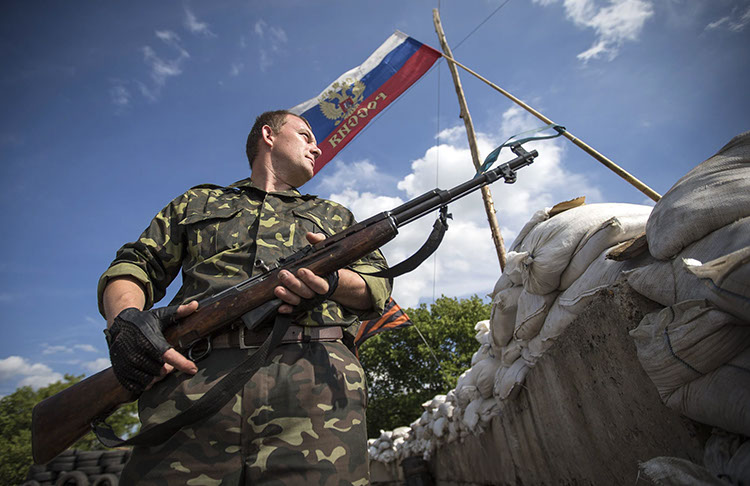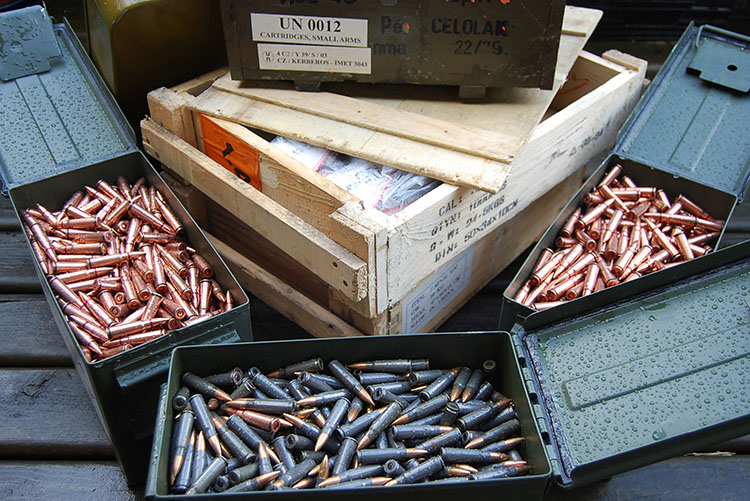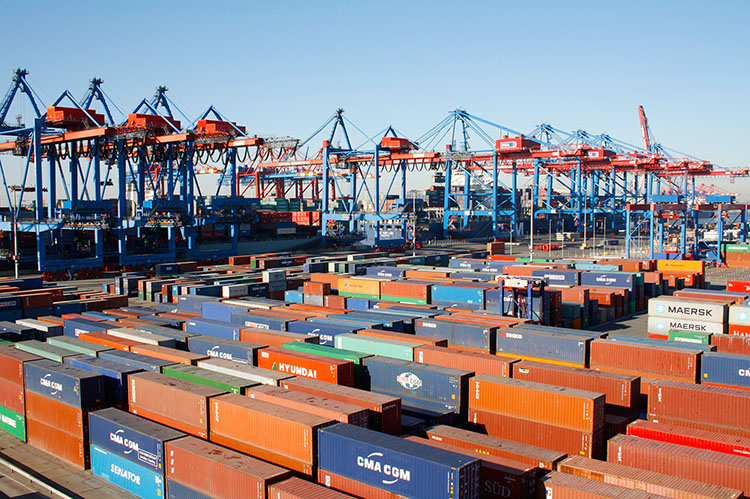
Canada's lawful gun owners are, by necessity, a careful demographic. We've all had to submit names and information to a national database, and we all live with the responsibility of storing guns and ammunition safely, because we know the consequences. We don't take unnecessary risks. But back in 2005,the movie Lord of War was so enticing - imagine being Yuri Orlov, who travels the world, buying containers of surplus arms and ammunition, and reselling them - that we all paid our money and gambled on two hours of close-range, high level Nicholas Cage exposure. Because that story was just too good to pass up.
Of course Orlov was a criminal, supplying arms to conflict zones and eventually his crimes caught up to him. But what about the legal surplus arms market? There had to be fortunes that could be made, supplying legitimate firearms enthusiasts in free countries where they could own such things.
"It was back in 2004, maybe 2005, when we first tried to import surplus ammo from Ukraine," said Al. "Looking back, I guess we were a bit naive."
Al is one of the minds behind Westrifle, one of Canada's largest importers of surplus firearms and ammunition.
"We just knew people in Ukraine," he tells me. "Friends. Colleagues. We knew there was ammunition there. They said they could sell it to us if we had a way to export it. We just started doing it. It wasn't until we'd already started that we realized the paperwork alone would take us a year or more. We needed to think of something else to do for that year, something easier."
"So what did you do instead?"
"We started importing rifles. It turned out not to be that easy, either."
I began by asking, of course, about Canada. Calibre is a Canadian magazine, after all. I wanted to know what hurdles the Canadian government had thrown into the path of importers. Al apologized but refused.
"No, I can't comment on Natural Resources. We are totally dependent on maintaining a good relationship with them and they would have to answer your questions. But I can tell you about the other side. If you'd like to know about what we go through to get guns out of Ukraine, that I can tell you anything."
And so I sat and listened, and Al talked.
By the time the first container of SKS rifles arrived, it was 2007, and every inch had been a grind. The Ukrainian government had been characteristically bureaucratic and the process was seemingly interminable.
 It began with flights to Ukraine. The first step was to secure a contract with the Ukrainian military, which is a requirement to export surplus munitions. But to secure the contract is not easy; it is a process. In the first meetings, the Ukrainian army offered the ammunition for a price Al no longer remembers, but he immediately knew it was too high to make a profit after the cost of exporting the ammo. He refused, and prepared a counter offer. The catch? Each stage of negotiations had to be on the agenda for the meeting before it could be discussed. The counter offer was not on the agenda. It would have to be addressed at the next meeting.
It began with flights to Ukraine. The first step was to secure a contract with the Ukrainian military, which is a requirement to export surplus munitions. But to secure the contract is not easy; it is a process. In the first meetings, the Ukrainian army offered the ammunition for a price Al no longer remembers, but he immediately knew it was too high to make a profit after the cost of exporting the ammo. He refused, and prepared a counter offer. The catch? Each stage of negotiations had to be on the agenda for the meeting before it could be discussed. The counter offer was not on the agenda. It would have to be addressed at the next meeting.
"And the meetings are once per month. All military contract discussions must happen at these meetings. If your business does not get completed at one, you must get on the agenda for the next month. If you cannot get on that agenda, it's two months. And this goes on for a very long time."
And once the counter offer is made, approval must be made by the Minister of Defence. That's another meeting.
And assuming the Minister of Defence approves the contract in principle, people must be assigned to handle the contract.
That's another meeting. A one year contract must be signed. That's another meeting. Months go by. Flights to the Ukraine add up. Expenses mount.
"Eventually our contract was approved. People were cleared to work on it. Then we were told we needed an export permit. Export permits are handled by a different body. That took time. When we had the export permit in place, it had to go back to the military business committee. They signed off on it and finally we were ready to begin exporting rifles and ammunition."
"So you just started loading trucks and rolling them to the border?"
"No, but that's when they took us to the salt mine. And the salt mine is amazing."
"What's the salt mine?"
"The salt mine is one of the places they store guns and ammunition. It's under a house, just a normal looking house. And then you go down underground and it's like a movie. You can hardly imagine it. It's full of everything. SKS rifles, AK rifles, RPGs, ammunition, machineguns. Everything. It's amazing, totally amazing."
At this point the Ukrainian military required a 50% down payment on the product before they would ship it to a military base, so in addition to all the expenses Westrifle had laid out, now some serious money was changing hands. But the goods supplied by the Ministry of Defence weren't guaranteed to be perfect. In fact, as far as the military is concerned, if they can unload the old, banged up stuff for the same price, they're better off giving you the scraps.
So either you inspect everything yourself, which takes time, or you hire someone you trust, which costs money, or you cross your fingers and take whatever they give you. Al chose option one, and went back to Ukraine.
 "But here is the problem," he said. "Let's say you are buying five thousand SKS rifles. To inspect them takes time, and you have to prepare for that. But what if one hundred rifles are not good enough? Then new rifles must be selected and brought to the military base, and since they are being sent to Canada, the magazines must be pinned. They must be packed in cosmoline and crated. To do one hundred rifles will take you two days. If you find two hundred rifles that are not good enough, it will take even longer, and you won't know the amount of time it takes until you are inspecting the rifles."
"But here is the problem," he said. "Let's say you are buying five thousand SKS rifles. To inspect them takes time, and you have to prepare for that. But what if one hundred rifles are not good enough? Then new rifles must be selected and brought to the military base, and since they are being sent to Canada, the magazines must be pinned. They must be packed in cosmoline and crated. To do one hundred rifles will take you two days. If you find two hundred rifles that are not good enough, it will take even longer, and you won't know the amount of time it takes until you are inspecting the rifles."
In the meantime, of course, you have to arrange a truck to move the rifles out of Ukraine. But to arrange the truck takes time, so you must gamble on the amount of time you'll need to get the rifles ready. Otherwise you're stuck paying the driver to wait, because there are very few trucks that will take munitions in Ukraine, and if you need to reschedule, the prices increase dramatically. And so the costs and stress begin to compile.
"But at that point you're just shipping it to a port, I assume."
"No, you ship it to Kiev."
"But what if it's close to a port already?"
"Like Lviv? It's close to the Polish border, close to Gdansk. We ship a lot of ammunition through Gdansk, or Hamburg."
"Right, what if it's in Lviv?"
"You ship it to Kiev. Every shipment of arms must be inspected in Kiev."
But shipping arms in Ukraine doesn't just involve putting it on a truck. Even if we remove the adas systems and other tracking measures involved, every single shipment of arms requires a police escort, two police in the front and two behind. This service, Al wearily admits, is not free. The cost is three to five thousand American dollars, depending on the duration of the escort. And the duration of the escort is not guaranteed. If the truck breaks down, has a flat tire, or is delayed, you must pay for that, says Al, and laughs. To ensure shipments arrive safely and when expected, using some sort of supply chain and shipping software is essential. That way you can track everything and make sure you know what's happening at all times. It's often best to use already established software, like that from Riskpulse, because you know it's a reliable software programme. Of course, learn how it works before using the software, but it'll certainly help you manage your fleet more efficiently.
"People who are from countries like Canada, they expect that delays which are the fault of the trucking company will be paid for by the trucking company. A flat tire, it's not the customer's fault. Why should it cost extra? But there, it is seen as an act of god, almost. And so you must pay for the trucker's extra day. But you must also pay for the four policemen's extra day. It becomes expensive."
But eventually the goods arrive in Kiev, and even later they are inspected, and finally they begin the trip to the Polish border. There was a time when they could simply be shipped to Odessa on the Black Sea and out to the Mediterranean, however, Russian involvement in the Crimean region has left Odessa off limits for the time being, and Poland is the alternative.
To arrive at the border of Ukraine and the Eurozone with a shipment of guns is no small matter, however, and simply exiting Ukraine will involve often frantic calls from border guards to the Ministry of Defence, sometimes all the way to the Minister himself, before clearance is granted. This can take hours to days, and again the trucker and the police must be paid for each day.
"Honestly," says Al, "it's a big headache. The border guards eyes pop when they see what we have. They won't do a thing until they get permission from someone high up."
And, of course, the problem is now that you must ship arms within the Eurozone. This is possible but requires a transit document, which takes 30 days. And it is not possible to apply until your export permits are in place from Ukraine.
But at least the goods are moving.
 The next stop is very likely a bonded warehouse in Hamburg, Germany, to take your place in line for a ship. The port in Hamburg is huge, with ships leaving daily, but even in Hamburg, only about eight percent of ships are able to carry dangerous goods. Transporting dangerous goods is a complex process. In terms of what exactly can be classified as dangerous goods, aside from ammunition, some of the most commonly transported dangerous goods include hazardous chemicals. You can discover the facts surrounding dangerous goods by using this Storemasta guide. What this means is that a ship for your munitions will only be available once every two weeks, so if the truck was delayed and you lost your place in line, you must wait for the next boat. If the next boat is already full, you might well be delayed a month, all the while accruing costs.
The next stop is very likely a bonded warehouse in Hamburg, Germany, to take your place in line for a ship. The port in Hamburg is huge, with ships leaving daily, but even in Hamburg, only about eight percent of ships are able to carry dangerous goods. Transporting dangerous goods is a complex process. In terms of what exactly can be classified as dangerous goods, aside from ammunition, some of the most commonly transported dangerous goods include hazardous chemicals. You can discover the facts surrounding dangerous goods by using this Storemasta guide. What this means is that a ship for your munitions will only be available once every two weeks, so if the truck was delayed and you lost your place in line, you must wait for the next boat. If the next boat is already full, you might well be delayed a month, all the while accruing costs.
But once you make the boat to Halifax - the last port left on Canada's east coast which handles dangerous goods - you can rest easy. Well, at least until the containers are offloaded here in Canada. Customs will need time to inspect and clear the goods, and storage is at a $200/day warehouse. Shipments can take a days or sometimes weeks to clear, and when they do, they're no longer at the port, but at the customs inspection site, and a truck must be hired to haul the goods back to a bonded warehouse to await clearance, where they will most likely use equipment from www.platformsandladders.com/ or somewhere similar to store your goods and access them later on if needs be.
And the end result of this still puts your goods in Halifax. Westrifle is located in Vancouver.
"Does the Port of Vancouver do dangerous goods?" I ask.
"It does, but then you must take the Panama Canal. Plus you will go through American waters. And if the ship lands in the US, it's a nightmare. The permit for this is nearly impossible to get. We had a shipment of rifles come to Vancouver and the shipping company forgot to mention that the ship would dock in Seattle. The US Government policy is that if your goods arrive without the required permit, they become the property of the US Government. I was able to get the permits after two weeks of desperate work but it cost me fifteen thousand dollars."
On top of the usual bureaucratic delays and expenses, Ukraine is now in a state of conflict with Russia. And not only is this driving up prices, but it's eating into the supply throughout Europe. The entire known supply of Romanian surplus 7.62x39 has been purchased by a German company, and the increased demand has allowed them to raise their prices 50% over the past year.
And, of course, the price of all the incidentals is also increasing. To transport armaments in a country with an uncertain military future is more dangerous; every link in the chain becomes more expensive.
As all of this wasn't enough, the supply is dwindling as demand grows, and the piece of the pie left for independent private companies shrinks each year. Every country sets a limit on the amount of ammunition it will surplus and sell each year; of that, African military contracts may eat forty percent, other developing countries another twenty percent, and most of what remains is often bought by a large German distributor. Of the annual budget of, say, 50 million rounds, perhaps only 5 million will be made available for sale to smaller exporters. These companies range from Canadian outfits to, ironically, Czechs, who, having liquidated most of the surplus 7.62x39mm ammo in their country, are now looking elsewhere to supply their own sport shooters.
And as this is happening, the need for rifles and ammunition in Ukraine is itself growing.
The only possible conclusion from all of this is that the overall supply of cheap surplus won't last forever. Estimates of SKS rifles left in Ukraine are now around 120,000. That sounds like a lot, but the demand for these rifles in Africa is extremely high and as many as 40,000 are sold each year. The supply will not last.
The next stop, then, is Russia. But although the process for exporting arms from Russia is roughly similar to the Ukrainian process, it is much, much slower. And Russian pricing is, across the board, 25 to 30 percent higher than Ukraine. Coupled with the slower exportation process, it is reasonable to conclude that retail prices for Russian surplus will be significantly higher. There is, perhaps unsurprisingly, a German distributor who is already moving Russian surplus ammunition, but the cost is prohibitive by today's standards: 485 euro per thousand rounds, on ammunition that was offered in Russia for $120 per thousand.
The price, of course, reflects not only the profit margin of the distributor, but also the difficulty of exporting the ammunition in the first place.
So the next time you look at a surplus rifle, or a case of surplus ammunition, and think it's overpriced, remember two things: getting it here was probably a lot more difficult than you thought, and the prices are only going in one direction.